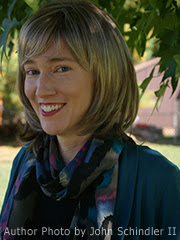So, I think the last two volumes of
Fables really work together, as they have overlapping timelines for the main story, so I'm going to review them together.
 Fables, Vol. 18: Cubs in Toyland
Fables, Vol. 18: Cubs in Toyland Bill Willingham
 Fables Vol. 19: Snow White
Fables Vol. 19: Snow White Bill Willingham
Cubs in Toyland starts in the with main story right away. Therese has a toy boat that takes her to be the Queen of Toyland, but Toyland is a dark, twisted place. It's the island of Misfit toys-- toys that were all involved in the death of a child. They have hopes for a Queen that will restore them, but there is no food to sustain Therese. Meanwhile, Snow, Bigby, and Therese's brothers and sisters are frantically searching for her. One will find her, with devastating consequences.
It then moves onto some back story on Bigby Wolf, and destiny.
The first third of
Snow White takes place in Oz, wrapping up the storyline of Bufkin. It's a good end to the story, and it was dragging a bit there and needed to be wrapped up, but I will miss him greatly in the lost business office of the Fabletown.
The last part of the book is where the "Snow White" title of the Omnibus comes from and covers the same amount of time, showing what's happening in New York when Therese goes missing. Now, here's a very cool thing-- the magical car that we got out the end of
Fairest: Wide Awake has appeared-- so Bigby and Stinky are off through worlds, tracking the missing cubs. Meanwhile, the fencing instructor from Castle Dark? The one that Mrs. Spratt/Leigh was into? Turns out, he's Snow White's fiance, pre-Prince Charming days and he's come to claim her. Snow's having none of it, but he has some powerful magic working there. This, too, has devastating consequences.
So, I wanted to look at these together, partly because I'm super-behind on reviewing, but this time it works out, because these volumes play out so well. The main storyline in each volumes actually ends with more-or-less the same panel. (The "camera angle" is a bit different, but the scene, and dialogue, are the same.) Both storylines are heartbreaking and they both bring back some of the magic that's been lacking a bit. I wasn't a huge fan of the whole Mr. Dark storyline (I just don't think it every really got going or had the same gravitas as the Empire in terms of the Big Bad.) I think this hits at a much deeper, more emotional level in a way I think is a first for the series.
I read
Cubs in Toyland a full year ago, and Toyland is so creepy, it still gives me the heebie-jeebies. I love the way the storylines play on each other-- ending
Snow White with that same panel is the ultimate gut punch in a gut punch of a book. I don't know if this series has every really made me cry, but both of these did.
Also, let's give a shout-out for Ambrose Wolf. He's obviously the "loser" or the pack, but adult Ambrose plays a large narrator role in these stories, and it's great to see a glimpse of who he's going to grow into. Maybe not a hero, but a pretty great stand-up scholarly guy (with a wife I have suspicions about. Check out the color of her skin--is it because it's nighttime and it's shadow? Or is she actually green, and quite probably the Lady of the Lake?)
And, I love that the
Fairest series is weaving in a bit right now. In general, I like that Fairest is about stuff outside of Fabletown, but it's weaving in in small, interesting ways. I'm intrigued.
Anyway, this whole set is super powerful and moving and I need to TALK ABOUT IT. Hit me up if you want to discuss.

Question-- the cover artwork for
Snow White looks a lot like it was probably an alternate possibility for the cover artwork for the new edition of
Legends in Exile (aka, Fables #1). What is the symbolism there?
Also, I had forgotten about the end story in
Cubs of Toyland until I started working on this review. I have some hope about things now. If you haven't read them yet, it's very relevant to what happens in
Snow White. I think. I hope.
Books Provided by... my wallet
Links to Amazon are an affiliate link. You can help support Biblio File by purchasing any item (not just the one linked to!) through these links. Read my full disclosure statement.


